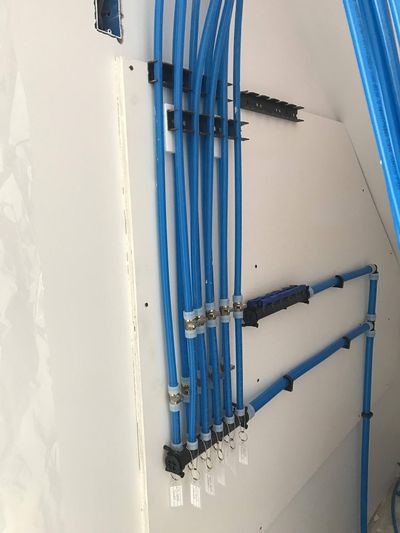Ask the Builder: PEX or copper, which is the best to use?

Q. I have to install new water supply lines in my home. My current home has copper water supply lines. I’m intrigued by the plastic PEX material, but it seems too good to be true. Using PEX, I’d only have a joint in my basement and then up at the shutoff valve at the fixture. Hard copper requires many more fittings and lots of soldering. What’s been your experience with both materials, and what would you use in your own home? – Victoria C., Grand Rapids, Michigan
A. I could write a book on the topic of copper vs. PEX water lines. There’s that much information to know about both products when considering the pros and cons to each. Another thing to keep in mind: There are different types of plastic PEX piping and different systems. Having said that, I’m going to give you the CliffsNotes version. You’ll be able to make a sound decision for sure.
I cut my teeth as a young plumber using copper. PEX hadn’t been invented at the time. Plastic PEX tubing was introduced into the U.S. market as a radiant floor heating product in the 1980s. In the 1990s, PEX started to appear as piping material for use in domestic potable drinking water supply.
Copper is a time-tested water supply line material, but it’s not immune to trouble. There are places in the U.S. where the water chemistry is aggressive. The water can dissolve the copper and cause pinhole leaks and other catastrophic failures. Copper also is liable to splitting if the water in tubing freezes and expands.
Copper is easy to work with – a homeowner with just a little practice and inexpensive tools can cut and solder copper, creating leakproof joints. It might seem intimidating, but I recorded a video years ago showing how to solder copper in just minutes. You can watch it on my askthebuilder.com website.
The issue with copper is that it takes time to install a water line from one part of a home to another. You may have five or more fittings to get from point A to point B. Each fitting requires you to cut and clean the pipe, clean the fitting, apply flux and solder.
Working with a hot propane torch around wood can be dangerous. Countless house fires have been started by plumbers and DIYers who underestimate how fast a torch can ignite nearby combustible materials. There’s a newer system to attach fittings to copper tubing without solder.
The fittings have a rubber O-ring inside them, and an expensive tool crimps the fitting onto the end of the tubing to make a leakproof connection. The fittings also are expensive compared to those you solder.
PEX tubing is a magical material. For the most part, you install it like you’d run an electric cable from a circuit-breaker panel to a wall outlet. You snake the PEX tubing through floors and walls from a manifold or adapter in your basement or crawlspace and then end the tubing at the fixture.
There are no joints at all that can leak between the two points. I prefer the Uponor PEX system. You create a leakproof connection using a small PEX collar that slides over the end of the tubing. A tool is used to expand the PEX so it can slide onto the end of a fitting.
It’s far easier to create a joint using PEX than it is using copper, and I created a “Connect PEX” video at my website to show you just how easy it is to do.
The PEX tubing has a memory and wants to go back to its original shape, so it starts to squeeze very hard onto the ridges on the fitting. After a short time, it’s impossible for me to try to pull the tubing off a fitting. I’ve never ever had a leak with PEX tubing.
Another benefit to PEX is its resistance to splitting when water freezes inside the tubing. In my current home, which I did not build, a second-floor water line to a sink always freezes in bitterly cold weather because the builder and plumber goofed up installing the PEX. The tubing has never split and leaked.
You can purchase electric tools that expand the PEX, or you can use hand-powered versions. Cutting the PEX accurately is important, and a simple hand tool cuts the tubing square and perfectly each time.
You can install PEX as you would a traditional copper system where a larger-diameter pipe supplies water to all the fixtures as the large line snakes through the house. Or you can install a separate water line from a manifold to each fixture. The manifold method ensures that you have no hidden joints or fittings hidden in walls or ceilings, but you end up using much more tubing material.
I’m a big believer in PEX. And because it’s so easy to install, I’d use it in any new home I’d build. I just installed more than 6,000 feet of hePEX in my daughter’s home for radiant heating, and I installed about 1,500 feet of PEX for her hot and cold water lines. We went with the manifold system because I didn’t want any hidden fittings anywhere.
Subscribe to Carter’s free newsletter and listen to his new podcasts at askthebuilder.com.